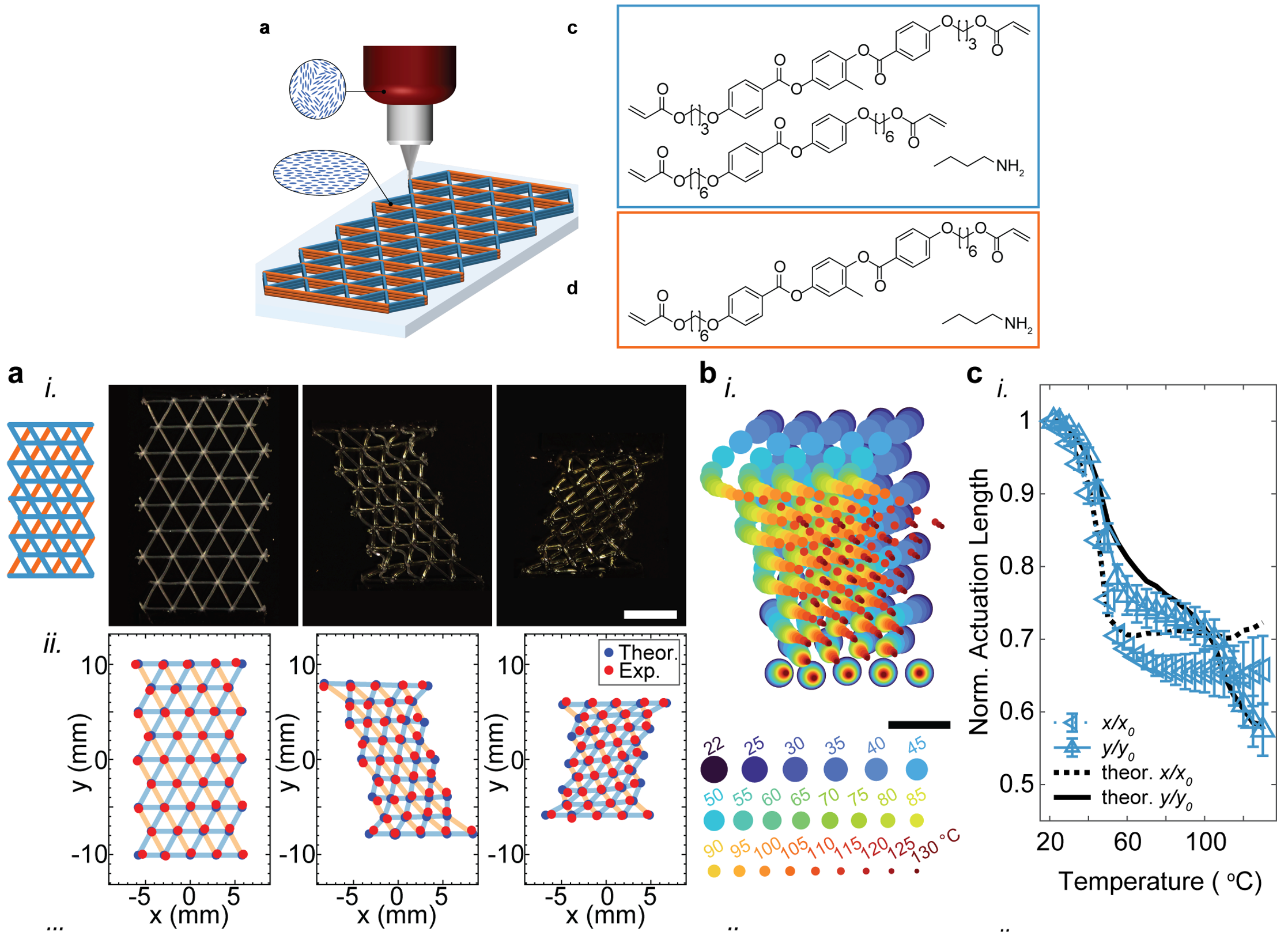Liquid crystal elastomer lattices with thermally programmable deformation via multi-material 3D printing

Liquid crystal elastomers (LCEs) are stimuli-responsive materials that hold promise for applications ranging from soft robotics to tissue engineering. A team lead by Lewis and Bertoldi have combined multi-material 3D printing with inverse design to generate LCE lattices with programmable composition, mechanics, and deformation behavior. Specifically, multiple LCEs with disparate nematic-to-isotropic transition temperatures were printed in the form of triangular lattices. Guided by an inverse design framework, LCE lattices were assembled that encode transformations between multiple target shapes upon heating. This approach opens new avenues to generating multifunctional architected matter with tunable thermal response.
Publication:
A. Kotikian, A.A. Watkins, G. Bordiga, A. Spielberg, Z.S. Davidson, K. Bertoldi, and J.A. Lewis, "Liquid Crystal Elastomer Lattices with Thermally Programmable Deformation via Multi-Material 3D Printing," Advanced Materials 36 (34), 2310743 (2024) ![]()
![]()
Jennifer A. Lewis (Material Science & Bioengineering) and Katia Bertoldi (Mechanical Engineering)
2023-2024 Harvard MRSEC (DMR-2011754)
